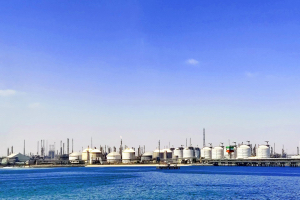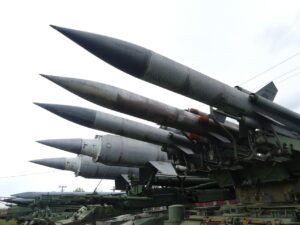
Insight
 By Sudeep Sonawane*
By Sudeep Sonawane*
India enjoys thriving trade, business, and socio-economic ties with the Gulf Cooperation Council (GCC) and Maghreb (the western part of North Africa and the Arab world) countries, and other states in the Middle East. Lakhs of Non-Resident Indians work in these countries. Foreign currency remittances transferred to India run into billions of dollars. In the financial year 2020-21, NRIs remitted over US $ 87 billion or 2.75 per cent of India’s Gross Domestic Product (GDP).
India’s two-way ties with some countries go back centuries. These ties are not fragile. They have survived the test of time and the sporadic regional stresses caused by diplomatic standoffs, the economic boycott of Qatar by Saudi Arabia and its allies that started in June 2017, and the recent pandemic.
A challenge sprang this week over incendiary remarks uttered by the spokespersons of India’s ruling Bharatiya Janata Party – Nupur Sharma – one of the national spokespersons, and Naveen Jindal, who was the BJP Delhi unit’s media chief. Their comments on the Prophet Mohammed (PBUH) hurt the sentiments of Islamic countries. The BJP suspending this vitriolic duo, perhaps, mollifies the Arab states. However, India and the BJP have much work to do to rectify its anti-Islamic image. While the Indian government grapples with the international embarrassment and damage inflicted by the offensive comments, exporters of heavy industries and commercial goods and services would worry over the probable sanctions from Islamic countries.
A comforting thought is nothing drastic will likely happen. The angst has already poured out from official statements issued by affected countries. Many summoned Indian envoys to tell them the likely consequences of insulting the Prophet by the two BJP office-bearers. Given the complexities of regional two-way ties, all this seems perfunctory, nothing compared to Russia invading Ukraine.
While frayed tempers cool, it is worth revisiting the volume of foreign trade India has with the GCC – a regional, intergovernmental, political, and economic union that consists of Bahrain, Kuwait, Oman, Qatar, Saudi Arabia, the United Arab Emirates – and other countries in the Middle East. GCC is the fourth-largest trading partner for India following North America, the European Union, and North-East Asia. India’s exports with the six GCC nations stood at $34.86 billion during April-January, while imports stood at $86.95 billion.

India’s merchandise exports in April-November 2021 were US$262.46bn, an increase of 50.71 per cent over US$174.15 billion in April-November 2020 and an increase of 24.29pc over US$211.17 billion in April-November 2019.
India’s merchandise imports in April-November 2021 were US $384.44 billion, an increase of 75.39pc over the US $219.19 billion in April-November 2020 and an increase of 18.44pc over $324.59bn in April-November 2019.
The trade deficit in November 2021 was US$23.27 billion, while it was $121.98bn during April-November 2021, according to unofficial data.
India-Qatar trade
 Observatory of Economic Complexity (OEC) data shows in 2020, India exported goods worth $1.34bn to Qatar. Rice ($144million), jewellery ($95.1M), and Gold ($29.1M) topped the exports. During the last 25 years, India’s exports to Qatar have increased at an annualised rate of 16.5pc, from $29.3M in 1995 to $1.34B in 2020.
Observatory of Economic Complexity (OEC) data shows in 2020, India exported goods worth $1.34bn to Qatar. Rice ($144million), jewellery ($95.1M), and Gold ($29.1M) topped the exports. During the last 25 years, India’s exports to Qatar have increased at an annualised rate of 16.5pc, from $29.3M in 1995 to $1.34B in 2020.
Qatar-India trade
In 2020, Qatar exported goods worth $7.25bn to India. The main products that Qatar exported to India were gas ($5.05bn), crude oil ($1.07bn), and halogenated hydrocarbons ($236M). During the last 25 years, Qatar’s exports to India have increased at an annualised rate of 19per cent, from $94.4 million in 1995 to $7.25 billion in 2020.
India-Saudi Arabia
 In 2020, India exported goods worth $6.37bn to Saudi Arabia. The main products that India exported to Saudi Arabia were rice ($1.1bn), refined petroleum ($598m), and cars ($565m). During the last 25 years, Indian exports to Saudi Arabia have increased at an annualised rate of 10.3pc, from $554m in 1995 to $6.37bn in 2020.
In 2020, India exported goods worth $6.37bn to Saudi Arabia. The main products that India exported to Saudi Arabia were rice ($1.1bn), refined petroleum ($598m), and cars ($565m). During the last 25 years, Indian exports to Saudi Arabia have increased at an annualised rate of 10.3pc, from $554m in 1995 to $6.37bn in 2020.
Saudi Arabia-India trade
In 2020, Saudi Arabia exported goods worth $16.8bn to India. The main products Saudi Arabia exported to India included crude oil ($11.1 billion), gas ($1.54 billion), and ammonia ($945 million). During the last 25 years, Saudi Arabia’s exports to India have increased at an annualised rate of 10.8pc, from $1.31 billion in 1995 to $16.8 billion in 2020.
India-United Arab Emirates trade
 In 2020, India exported goods worth $18.1bn to the United Arab Emirates (UAE). The main products India exported to the UAE included refined petroleum ($2.9 billion), jewellery ($2.33bn), and broadcasting equipment ($1.23 billion). During the last 25 years, Indian exports to the UAE have increased at an annualised rate of 10.7 per cent, from $1.42 billion in 1995 to $18.1bn in 2020.
In 2020, India exported goods worth $18.1bn to the United Arab Emirates (UAE). The main products India exported to the UAE included refined petroleum ($2.9 billion), jewellery ($2.33bn), and broadcasting equipment ($1.23 billion). During the last 25 years, Indian exports to the UAE have increased at an annualised rate of 10.7 per cent, from $1.42 billion in 1995 to $18.1bn in 2020.
United Arab Emirates-India trade
In 2020, United Arab Emirates exported goods worth $22.1 billion to India. The main products the UAE exported to India included crude oil ($6.34 billion), diamonds ($4.16 billion), and gold ($2.57 billion). During the last 25 years, the UAE exports to India have increased at an annualised rate of 12.7 per cent, from $1.11 billion in 1995 to $22.1 billion in 2020.
India-Oman trade
 In 2020, India exported goods worth $2.31 billion to Oman. The main products India exported to Oman included refined petroleum ($541 million), rice ($130 million), and large iron pipes ($116 million). During the last 25 years, Indian exports to Oman have increased at an annualised rate of 10.9 per cent, from $172 million in 1995 to $2.31 billion in 2020.
In 2020, India exported goods worth $2.31 billion to Oman. The main products India exported to Oman included refined petroleum ($541 million), rice ($130 million), and large iron pipes ($116 million). During the last 25 years, Indian exports to Oman have increased at an annualised rate of 10.9 per cent, from $172 million in 1995 to $2.31 billion in 2020.
Oman-India trade
In 2020, Oman exported goods worth $2.77 billion to India. The main products Oman exported to India included crude oil ($847 million), nitrogenous fertilisers ($558 million), and gas ($345 million). During the last 25 years, Omani exports to India have increased at an annualised rate of 21 per cent, from $23.8 million in 1995 to $2.77 billion in 2020.
India-Kuwait trade
 In 2020, India exported goods worth $1.16 billion to Kuwait. The main products India exported to Kuwait included rice ($229 million), Unglazed ceramics ($58.2 million), and jewellery ($38.2 million). During the last 25 years, Indian exports to Kuwait have increased at an annualised rate of 9 per cent, from $134 million in 1995 to $1.16 billion in 2020.
In 2020, India exported goods worth $1.16 billion to Kuwait. The main products India exported to Kuwait included rice ($229 million), Unglazed ceramics ($58.2 million), and jewellery ($38.2 million). During the last 25 years, Indian exports to Kuwait have increased at an annualised rate of 9 per cent, from $134 million in 1995 to $1.16 billion in 2020.
Kuwait-India trade
In 2020, Kuwait exported $5.91B to India. The main products that Kuwait exported to India are crude petroleum ($2.95 billion), aeroplanes, helicopters, spacecraft ($1.04 billion), and petroleum gas ($828 million). During the last 25 years, the exports of Kuwait to India have increased at an annualized rate of 8.87 per cent, from $707 million in 1995 to $5.91 billion in 2020.
India-Bahrain trade
 In 2020, India exported goods worth $457 million to Bahrain. The main products India exported to Bahrain included rice ($45.9 million), polyacetals ($39.2 million), and refined petroleum ($26.1 million). During the last 25 years, Indian exports to Bahrain have increased at an annualised rate of 8.55 per cent, from $58.7 million in 1995 to $457 million in 2020.
In 2020, India exported goods worth $457 million to Bahrain. The main products India exported to Bahrain included rice ($45.9 million), polyacetals ($39.2 million), and refined petroleum ($26.1 million). During the last 25 years, Indian exports to Bahrain have increased at an annualised rate of 8.55 per cent, from $58.7 million in 1995 to $457 million in 2020.
Bahrain-India trade
In 2020, Bahrain exported goods worth $449 million to India. The main products Bahrain exported to India included gas ($80 million), refined petroleum ($79.7 million), and raw aluminium ($63.5 million). During the last 25 years, Bahraini exports to India have increased at an annualised rate of 8.96 per cent, from $52.6 million in 1995 to $449 million in 2020.
The balance of trade favours GCC countries barring Bahrain, the data above show. India imports more from the GCC than it exports. India’s vital import remains crude oil. In conclusion, India’s trade ties are critically important with the GCC and other countries in the Middle East.
This explains why India should take punitive steps against radical people and ensure the longevity of these international trade ties.
*Sudeep Sonawane is a Consulting Editor of Global Bihari. He has lived in five countries in the Middle East and Asia and worked for newspapers published from there.





